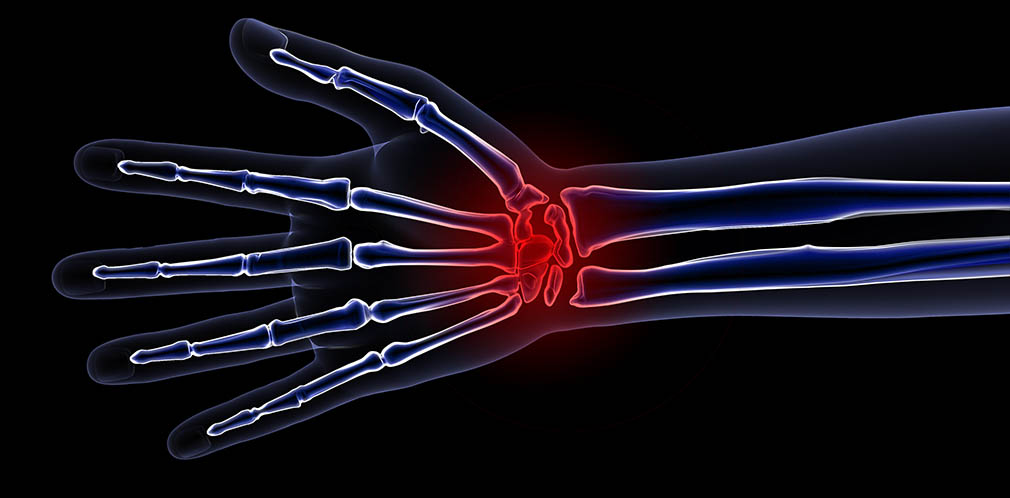
Carpal tunnel syndrome accounts for up to 50 percent of American workplace injuries and approximately three percent of American adults will suffer from it at some point in their life. Carpal tunnel has typically been treated medically with anti-inflammatory drugs like Advil and Ibuprofen, splinting, corticosteroid injections and surgery. Chiropractic care continues to gain momentum as a non-invasive treatment for carpal tunnel syndrome.
What is Carpal Tunnel Syndrome?
The carpal tunnel is a band of tissue found on the front side of the wrist, in the same area you might wear a watch. The carpal tunnel itself holds tendons, nerves and blood vessels required to operate your hand. Carpal tunnel syndrome occurs when there is damage or pressure placed on the nerves of the carpal tunnel. Symptoms include: pain, loss of finger sensitivity, numbness and weakness in the part of the hand supplied by the median nerve. Pain can often be more severe at night, causing you to lose sleep.
Typical Causes of Carpal Tunnel Syndrome
- Repetitive irritation of the median nerve that passes between tendons and under ligaments on the palm side of the wrist
- Repetitive motion, such as typing or assembly line work
- Fluid retention
- Compression
Chiropractic Treatment of Carpal Tunnel
Carpal tunnel syndrome is usually caused by a variety of issues, not just impingement at the site of the carpal tunnel. Chiropractic care helps treat all of the causes because fixing only one part of the problem doesn’t fix the overall issue. Chiropractic care helps get to the true cause of the problem in a non-invasive, non-surgical way.
Chiropractic treatment can offer relief from wrist pain, loss of finger sensitivity and hand numbness. Treating carpal tunnel syndrome with chiropractic care addresses the problematic wrist and elbow, as well as tracing the problem back to areas of the upper spine. Misalignment of the spine can contribute to symptoms.
The goal of chiropractic care is to restore and maintain the body’s state of ideal health. Chiropractic adjustments paired with rest, cold to reduce inflammation, recommended exercises and the use of a splint to immobilize the affected area can show improvement in nerve function, finger sensation, comfort, strength, range of motion and pain.
In a society where many of us sit at computers working all day, the risk of getting carpal tunnel syndrome increases due to the strain placed on the muscles in the shoulders, forearms, wrists and hands. Chiropractic care aims to remove the subluxations on the nerves so the body can begin to heal itself.
At Pangea Family Chiropractic, we have experience and success treating carpal tunnel syndrome with chiropractic adjustments. Contact us for more information about how chiropractic care can be used as a non-invasive treatment for carpal tunnel.






